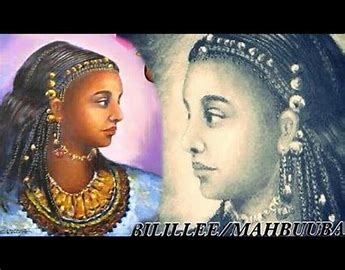Bilillee, also known as Mahbuubaa, was an Oromo slave girl who lived from 1820 to 1840. Her story is a remarkable tale of love and resilience in the face of adversity. Let’s delve into the details of her life and the events that shaped her journey.
Early Life and Capture
Bilillee was born in 1820 in Guma, a southern region of Ethiopia. Her parents named her “Bilillee,” which means “well-shaped” or “pretty.” However, she later came to be known as Mahbuubaa, which means “My Beloved” in Arabic [2].
In 1835/36, when Bilillee was just 15 years old, a civil war broke out in Guma. During the chaos, Bilillee lost her father and six brothers, and her village was burned to the ground. She, along with her sister and mother, was captured and taken as a slave [2].
Life as a Slave
Bilillee’s journey as a slave took her from Guma to Gondar and then to Khartoum (Juba or Sudan) in 1837. Eventually, she was taken to Cairo, Egypt, where slave traders hoped to sell her to wealthy sheiks and princes [1].
Meeting Prince Hermann Furst von Puckler-Muskau
In 1837, Prince Hermann Furst von Puckler-Muskau of Germany was traveling through North Africa. During his visit to Cairo, he went to the slave market and instantly became captivated by Bilillee’s beauty [2]. He decided to buy her and disguised her as his “Mameluke boy” to take her with him on his travels.
Love and European Journey
Prince Hermann Furst von Puckler-Muskau became infatuated with Bilillee, who now went by the name Mahbuubaa. They traveled together through Palestine, Syria, and Istanbul, where Mahbuubaa received Holy Baptism [2]. She also spent time in the best convent school in Vienna, where she quickly learned European ways and languages [2].
Tragic End
In 1840, Prince Hermann Furst von Puckler-Muskau and Mahbuubaa returned to Europe and settled in Budapest for a while. However, tragedy struck when Mahbuubaa fell ill with a lung disease. Before leaving for Berlin to visit his former wife, Prince Hermann wrote a letter for Mahbuubaa and sent it with a silver necklace bearing her name. Sadly, when the letter and necklace reached Muska on October 27, 1840, Mahbuubaa had already passed away [1].
Learn more:


